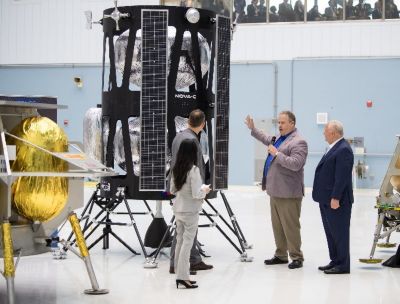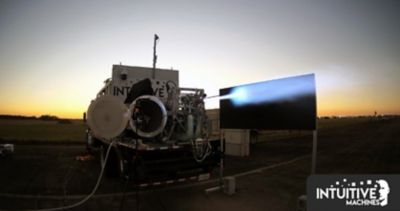-
-
Accédez au logiciel étudiant gratuit
Ansys donne les moyens à la prochaine génération d'ingénieurs
Les étudiants ont accès gratuitement à un logiciel de simulation de classe mondiale.
-
Connectez-vous avec Ansys maintenant !
Concevez votre avenir
Connectez-vous à Ansys pour découvrir comment la simulation peut alimenter votre prochaine percée.
Pays et régions
Espace client
Support
Communautés partenaires
Contacter le service commercial
Pour les États-Unis et le Canada
S'inscrire
Essais gratuits
Produits & Services
Apprendre
À propos d'Ansys
Back
Produits & Services
Back
Apprendre
Ansys donne les moyens à la prochaine génération d'ingénieurs
Les étudiants ont accès gratuitement à un logiciel de simulation de classe mondiale.
Back
À propos d'Ansys
Concevez votre avenir
Connectez-vous à Ansys pour découvrir comment la simulation peut alimenter votre prochaine percée.
Espace client
Support
Communautés partenaires
Contacter le service commercial
Pour les États-Unis et le Canada
S'inscrire
Essais gratuits
ANSYS BLOG
September 21, 2021
We Chose to Go Back to the Moon
Intuitive Machines is using multiphysics simulation to help land an unmanned vehicle on the Moon in 2022
Vice president of Research and Development of Intuitive Machines, Tim Crain, second from right, speaks with Thomas Zurbuchen, NASA Associate Administrator for the Science Mission Directorate, second from left, about the company's lunar lander at Goddard Space Flight Center in Maryland. Intuitive Machines was one of three companies selected to provide the first lunar landers for the Artemis program's lunar surface exploration. Image credit: NASA/Aubrey Gemignani
When U.S. President John F. Kennedy announced on Sept. 12, 1962, that "We choose to go to the Moon," he set the goal as the end of the decade. This gave NASA engineers a little over seven years to overcome the many challenges involved in putting men on the Moon and returning them safely to Earth. The successful Apollo 11 mission in July 1969 fulfilled Kennedy’s vision and stands as a testament to human ingenuity and valor.
When Intuitive Machines of Houston, Texas, won the contract in 2019 to land five NASA payloads safely on the Moon, they had a much shorter timeline. SpaceX informed Intuitive Machines that due to unique mission requirements the earliest available flight opportunity was in the first quarter of 2022. Considering lunar landings have until now been the “purview of superpowers,” as Steve Altemus, one of the founders of Intuitive Machines likes to point out, and that no company has ever landed on the Moon, this is quite a big challenge. With such a tight timeline, they will not have the luxury of building and testing multiple prototypes, such as the earlier Apollo missions in the 1960s, to incrementally work out the bugs. The first flight vehicle that Intuitive Machines builds will be the one that goes to the Moon, greatly limiting their testing time.
The prototyping constraints make engineering simulation a key to achieving the goal. As part of the Ansys Startup Program, which gives fledgling companies access to Ansys simulation software at a fraction of the list price, Intuitive Machines engineers are using Ansys Fluent to solve liquid oxygen/methane heat transfer challenges in the propulsion system. This is the first time anyone has used methane as a fuel for in-space propulsion. They are also using Ansys Mechanical to perform load analysis on all metallic components, as well as to reduce mass as much as possible while maintaining structural integrity under the high stress conditions of spaceflight. The engineers are performing multiphysics thermal and structural simulations, along with advanced materials simulations, to figure out how to keep electronics and cryogenics systems within temperature specifications in the wide temperature range the spacecraft will experience while in transit and when sitting on the moon’s surface. And they have recently acquired Ansys HFSS to optimize the high-gain antenna that will be used for communicating with the lunar lander.
Intuitive Machines' Nova-C will land near the Moon's equator in early 2022 with NASA and commercial payloads. The mission, IM-1, will mark the first commercial Moon landing ever.
Moon Landing Mission Details
To meet NASA’s goal of landing payloads on the Moon two to three times a year for 10 years following the first 2022 mission, Intuitive Machines engineers are designing the Nova-C lunar lander using mostly composites to keep the weight down, with a liquid oxygen/methane engine, precision landing and hazard avoidance systems, and the capacity to transport 130 kg payloads from Earth to the Moon for a soft landing on the surface. For the first mission, called IM-1, the Nova-C will be boosted into orbit by a SpaceX Falcon 9 Rocket in early 2022 and land near the Moon’s equator approximately six days later. For most of the flight, Nova-C will be controlled remotely from Houston, but the final descent and landing will be completely autonomous. When given the “Go” command, Nova-C will fire its own engine, automatically determine the best landing site to ensure it doesn't land on a rock or a crater, and touch down within a 200-meter ellipse of the target landing site. The first landing will occur during daytime, so only visual cameras will be necessary for navigation and landing; lidar sensors would be added for potential future nighttime landings. During 13.5 days on the Moon, the payloads will carry out various experiments before Nova-C enters the lunar night where the temperatures drop to levels so low that the vehicle electronics and batteries are unlikely to survive.
The second mission, scheduled for late in 2022, called IM-2, will have as part of its payload Intuitive Machines’ µNova (micro-Nova) “hopper,” which is a flying rover developed as an alternative to the dune-buggy-type rovers that have been used on the Moon and Mars. The µNova vehicle can fly to extreme environments like the bottoms of lunar craters that would be a challenge for a wheeled vehicle to navigate. One purpose of the IM-2 will be to use NASA’s PRIME-1 payload to drill into the surface of the cold South Pole to look for subsurface ice that scientists believe might be present. While that is going on, the µNova will be flying from one crater to another, a few tens of yards at a hop, examining “permanently shadowed regions,” which have never before seen sunshine, taking data and sending it back to the N-C for transmission to Earth.
Intuitive Machines engineers are using Ansys Fluent to solve liquid oxygen/methane heat transfer challenges in the propulsions system. The 900 lb thrust engine is tested at least once per week less than a mile from the Intuitive Machines production facility at the Houston Spaceport.
Cooling Electronics in a Vacuum
All electronics have a specified temperature range for optimal operation. For this project, the vacuum of outer space and the Moon (which has no atmosphere) poses one challenge. Another will be adapting to the dramatic temperature variations the Nova-C will experience between the in-transit and lunar surface phases of the mission. In transit, the lander will be extremely cold, so heaters will be needed to keep electronic elements warm. Activating heaters is simple enough. But when sitting in the sunlight on the moon’s surface, Nova-C will get hot, and Intuitive Machines engineers must develop a way to keep the electronics from burning up.
With no atmosphere on the Moon, heat cannot be dissipated by convection, and an active cooling mechanism like a fan would be useless because there is no air to move for cooling purposes. The main cooling mechanism is radiation, a passive mechanism that works even in a vacuum. Materials are key to passive radiation cooling. Intuitive Machines engineers are using Ansys Mechanical to develop a system that has low mass, high conductivity and a balance of solar absorptivity (a) and infrared emissivity (e) — a measure of a material’s effectiveness in absorbing and reemitting energy as thermal radiation — to exchange heat with the vacuum of space. They are also simulating the effects of emissivity on different multilayer insulation architectures that are common on spacecraft.
One area of concern is the avionics package, which controls the flight parameters for the mission and contains many integrated circuit chips, some of which generate significant amounts of heat. The engineers may have to dissipate anywhere from a few tenths of a watt to one or two watts of power from a chip to keep the temperature within specifications. But they can’t put a thermal sensor on every chip. Instead, they use Ansys thermal simulations to map the temperature of the aluminum box that contains the printed circuit board on which the chips are mounted. By using the temperature data from specific points on the surface of the aluminum casing, they can perform thermal simulations to determine the temperature of the chip itself. With this information, they can add heat spreaders to transfer excess thermal energy to the chassis of the Nova-C to either radiate the heat out into space or conduct it back into the lander for re-use.
Prior to adopting Ansys software as their standard, Intuitive Machines engineers worked with separate thermal and mechanical simulation solutions from different vendors. They had to spend a lot of time mapping the temperatures from the thermal analyses onto the structural model because the grid layouts were not the same in the two software packages. With Ansys thermal and structural solvers working together with the same geometry, the mapping is easy and automatic, saving them time and money.
The second mission, scheduled for late in 2022, called IM-2, will have as part of its payload Intuitive Machines’ µNova (micro-Nova) “hopper,” which is a flying rover.
Reducing the Mass of the Nova-C
Keeping the mass of the lander as low as possible is key to this mission. Less mass in the lander means more room for customer payloads. Every extra kilogram built into the lander costs Intuitive Machines a significant amount of money in lost business opportunities, so the engineers are planning to use topology optimization to reduce mass. Instead of looking first at the overall architecture of the Nova-C, they will initially concentrate on internal details like inserts, fittings and joints that hold the lander together. Because these parts are used many times in the construction of the lander, saving a little mass on each piece quickly adds up. If the engineers can use topology optimization in Ansys Mechanical to save 100 grams on a particular fastener that is used at 20 places in the structures, that’s a savings of 2 kilograms. While 2 kilograms may not sound like much, at an estimated payload price of ~$1 million to $2 million per kilogram, a few kilograms can add up quickly.
The Large Role of Simulation
Intuitive Machines engineers consider simulation to be essential to the success of this project due to its many challenges and tight deadline. After all, they will only get one chance to build the Nova-C that will land on the Moon, so simulating its operation is a key to success. They found the Ansys Startup Program to be very helpful because it gave them a chance to explore many areas of simulation and determine which ones were critical for reaching their goals before making purchasing decisions.
For example, they were able to experiment with Ansys’ 3D printing simulations to predict the warping of metal parts and revise the design to take this warping into account. By analyzing how often the software is used by how many engineers, they will be able to buy the right number of licenses for their purposes — no more, no less.
They are also using in-house software to run simulations of orbital dynamics and landing scenarios, as well as their visual navigation systems. For critical structural, thermal and fluid flow simulations, they trust Ansys simulation solutions to provide crucial capabilities to help get them to the Moon in less than two years. Success will make Intuitive Machines the first small, privately funded company ever to land on the Moon. If anyone is racing to beat them to this distinction, they better hurry.
Learn more about the Ansys Startup Program.



